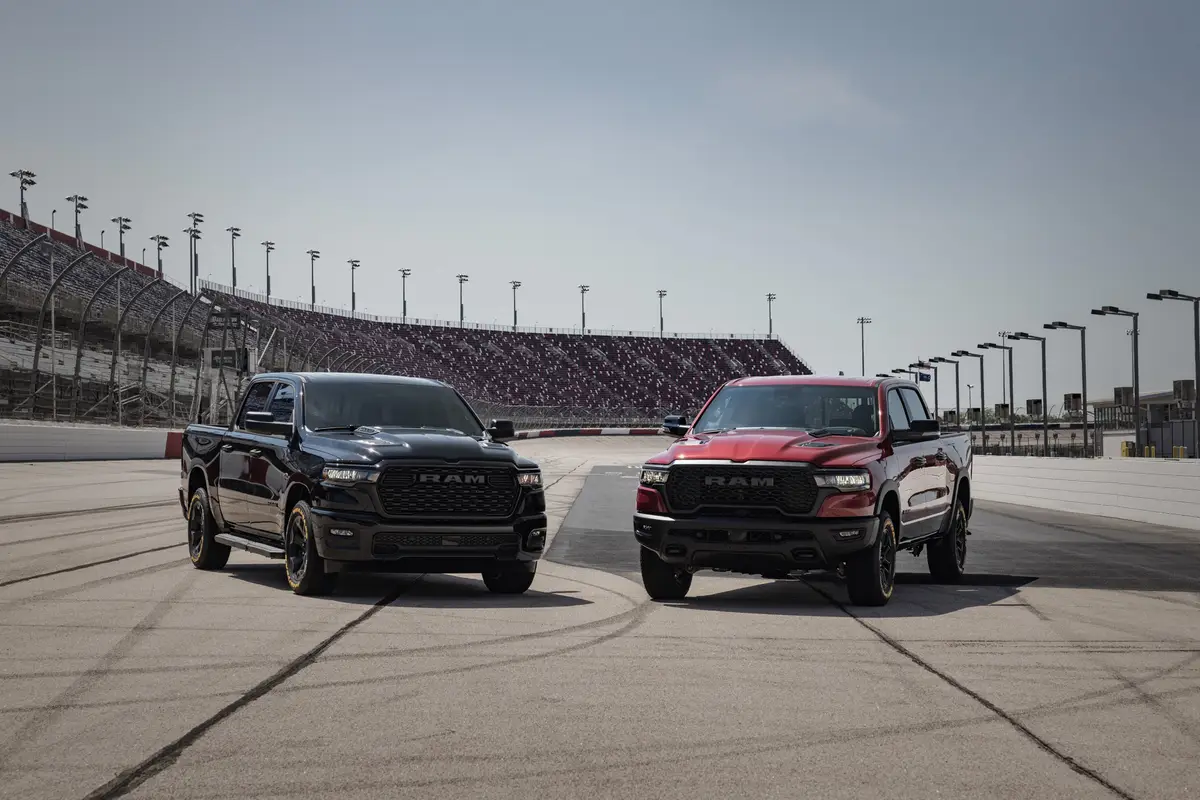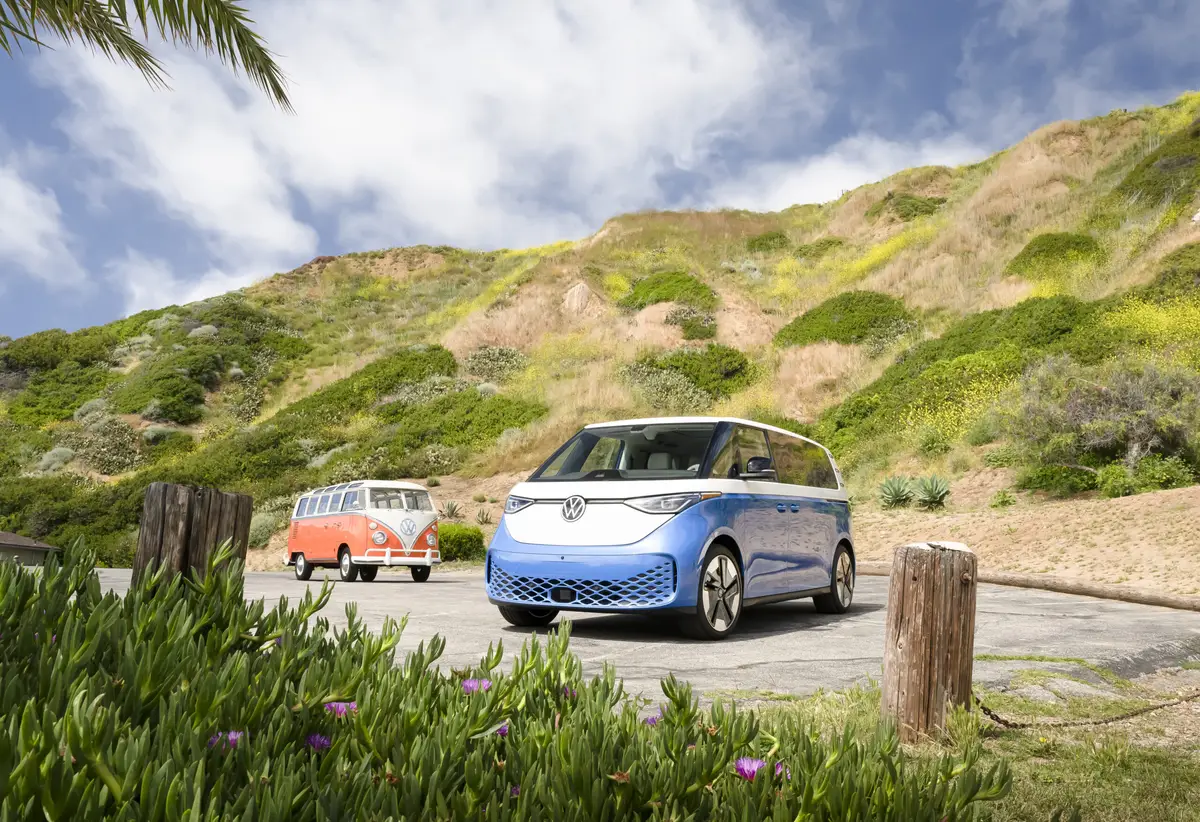2025 Polestar 3 Review: Understated Electrified Luxury

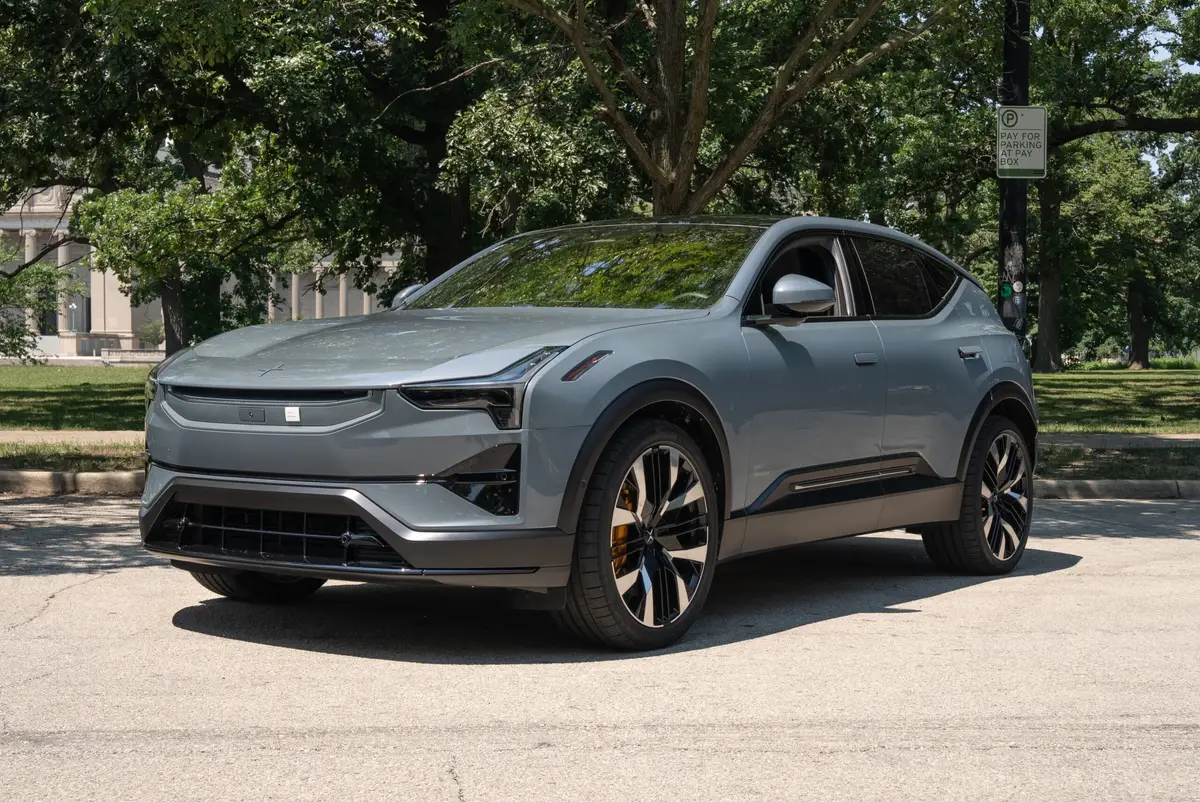
Is the Polestar 3 a Good Luxury Electric SUV?
- The 2025 Polestar 3 is a compelling alternative to mid-size luxury electric SUVs from BMW, Mercedes-Benz and Tesla, but its sleek, sporty-looking exterior has consequences for those seated inside.
How Does the Polestar 3 Compare With Other Electric SUVs?
- The Polestar 3’s luxury, technology and performance make it feel right at home versus electric vehicles from legacy luxury brands, but the Polestar brand’s relative newness in the market may be a stumbling block for some shoppers.
The new-for-2025 Polestar 3 is an important vehicle for the brand, giving Polestar its first offering in the popular SUV class. It’s also Polestar’s new flagship vehicle, slotting above the Polestar 2 four-door hatchback and the upcoming Polestar 4 fastback SUV. Available in single-motor, rear-wheel-drive form or as a dual-motor version with all-wheel drive, the Polestar 3 offers the same kind of understated, minimalist luxury seen on the manufacturer’s other models. Our time with this electric vehicle, however, started out rocky.
The Polestar 3 we drove for this review was actually the second one Cars.com had brought in for testing. During our initial test of a Polestar 3 Launch Edition, we experienced a series of software glitches with the car’s screens and controls. Some of them resolved on their own, but others did not, and we ended up returning the car early because we weren’t able to give it a full evaluation amid all those problems. That’s not something we do lightly, but when we next got a Polestar 3 for testing — a dual-motor Performance version — it was issue-free. The driving impressions in this review are drawn from that car.
Related Video:
A Distinctive Exterior Aesthetic
There’s a chiseled muscularity to the Polestar 3 that gives it quite a bit of road presence, but it’s balanced by Polestar’s minimalist design cues and a muted color palette that favors blacks, whites and grays. Interesting design elements include a front aero wing on the leading edge of the hood, a glass roof and the 22-inch forged-aluminum wheels shown here, which are part of the Performance Package. Also part of this package is a boost in output for the dual-motor powertrain, up to 517 horsepower from 489 hp. And if you can’t quite remember how much power your 3 makes, Polestar helpfully includes the output (in kilowatts) right on the front doors, along with the SUV’s battery capacity: 111 kilowatt-hours. That’s enough for Performance versions to have an EPA-estimated driving range of 279 miles on a full charge.
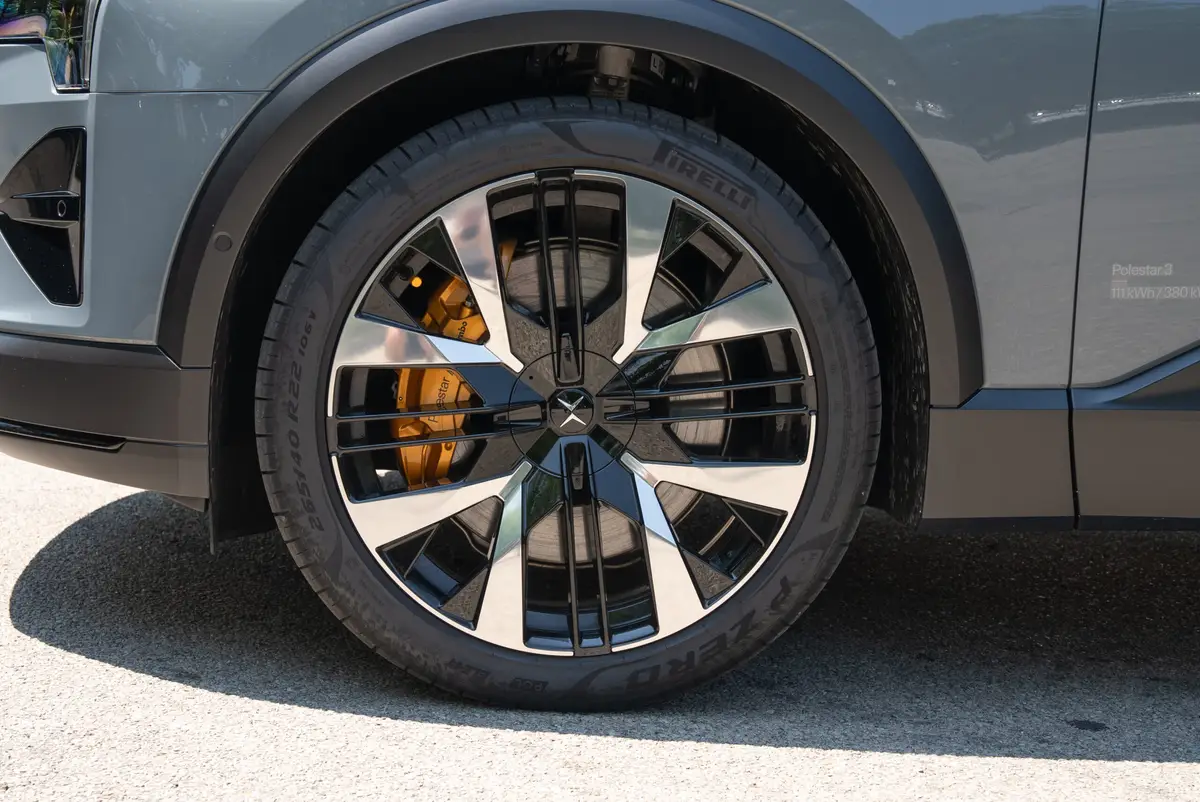
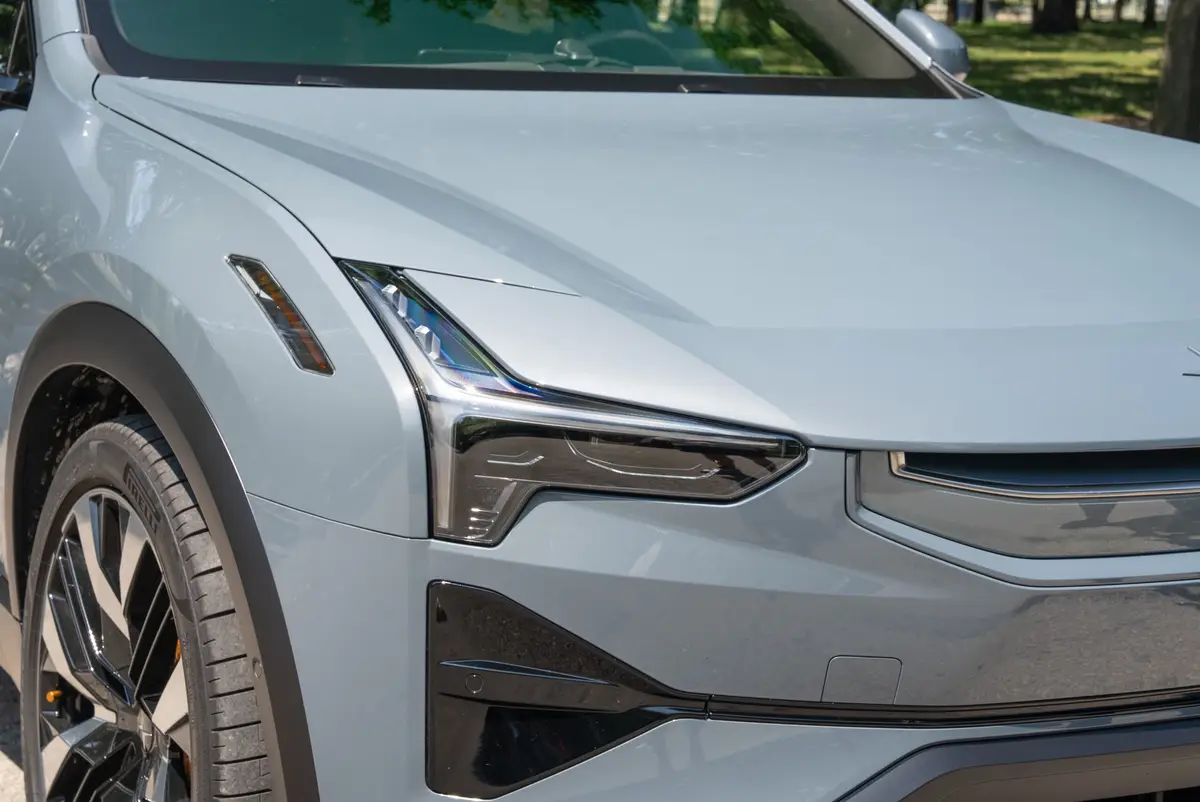

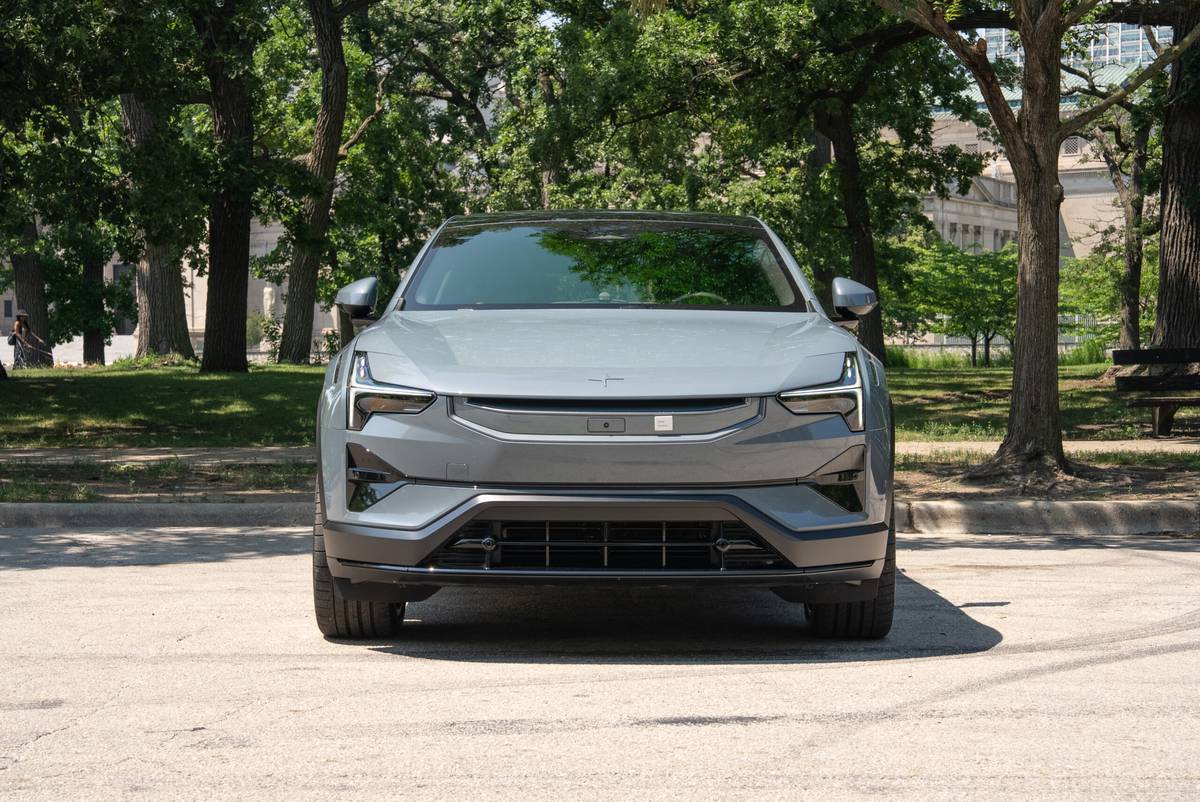

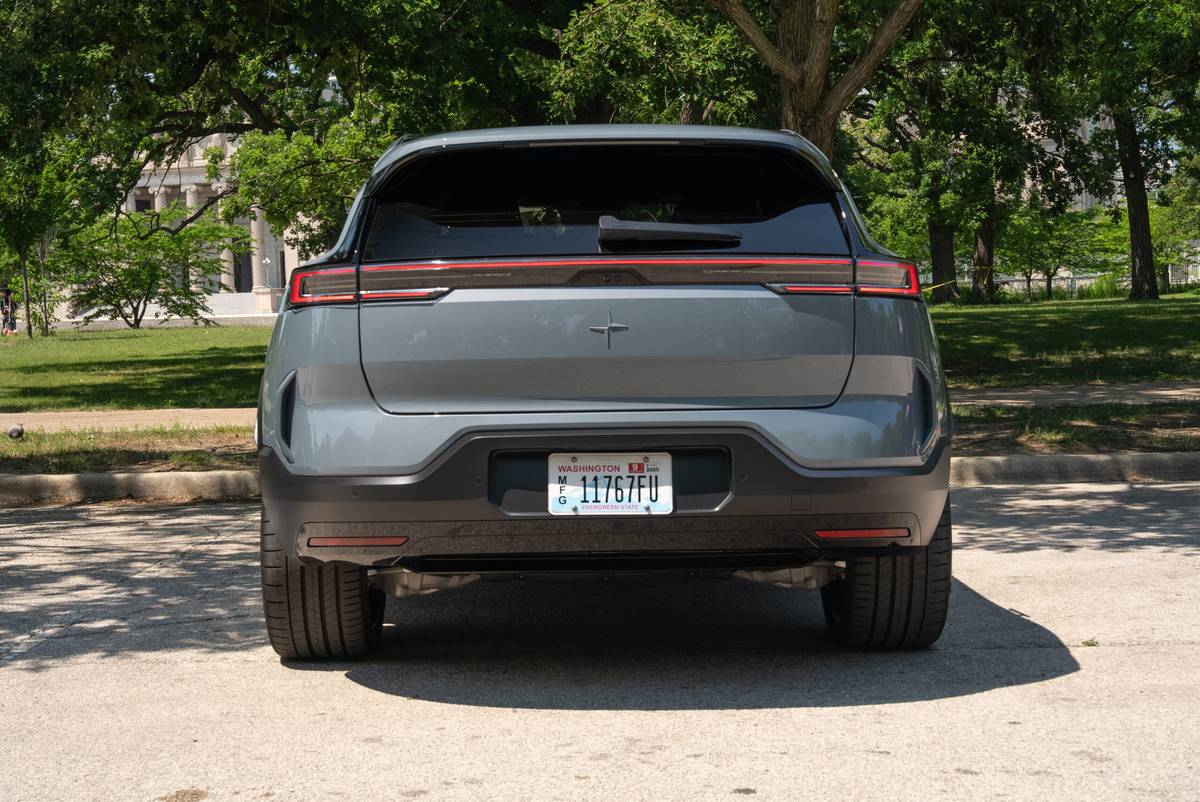


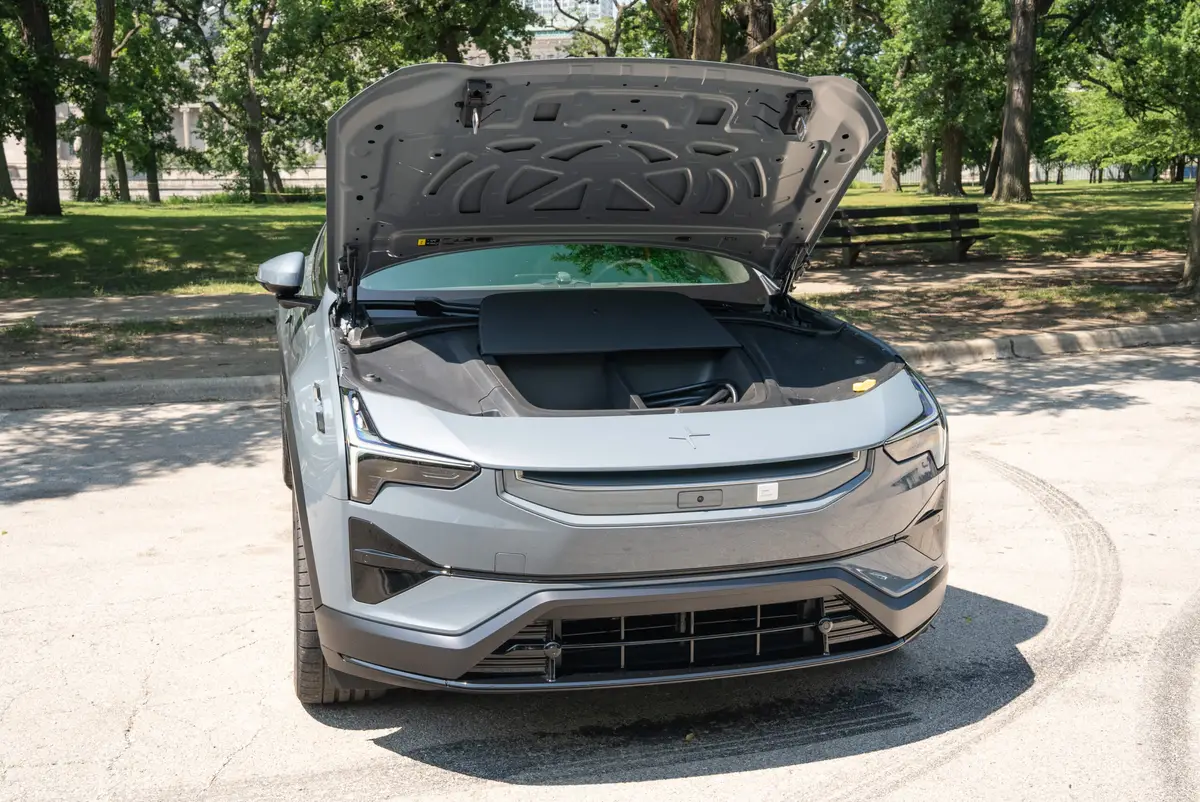









Paired With a Minimalist Interior
Many of the controls in the Polestar 3 have been consolidated into a vertically oriented 14.5-inch touchscreen in the center of the dash, supplemented by a 9-inch driver display in front of the steering wheel. The center touchscreen is responsive, high-res and easy to navigate — when you’re stationary and you can direct your full attention to it; it’s harder to dive into its menus while driving. Our editors liked the Polestar 3’s driver display, which offers a few different view options, including a nav screen and driver-assist mode, but they weren’t as impressed with the car’s steering-wheel controls, which consist of unlabeled pads with corresponding icons that appear on the driver’s display. You use these pads to adjust the side mirrors and steering wheel, and in this way, the Polestar 3 is like Tesla: making once-simple adjustments more complex.
Unlike Tesla, however, the Polestar 3 includes wireless Apple CarPlay. It was easy to connect my phone to the system, and CarPlay looks good on the Polestar’s big screen. The infotainment system uses Android Automotive OS with Google Built-In apps, like Maps and the Play store (to get additional apps). One app you can’t get, however, is Android Auto, the Android phone counterpart to CarPlay. You can at least log into the Polestar 3’s infotainment system with a Google account.
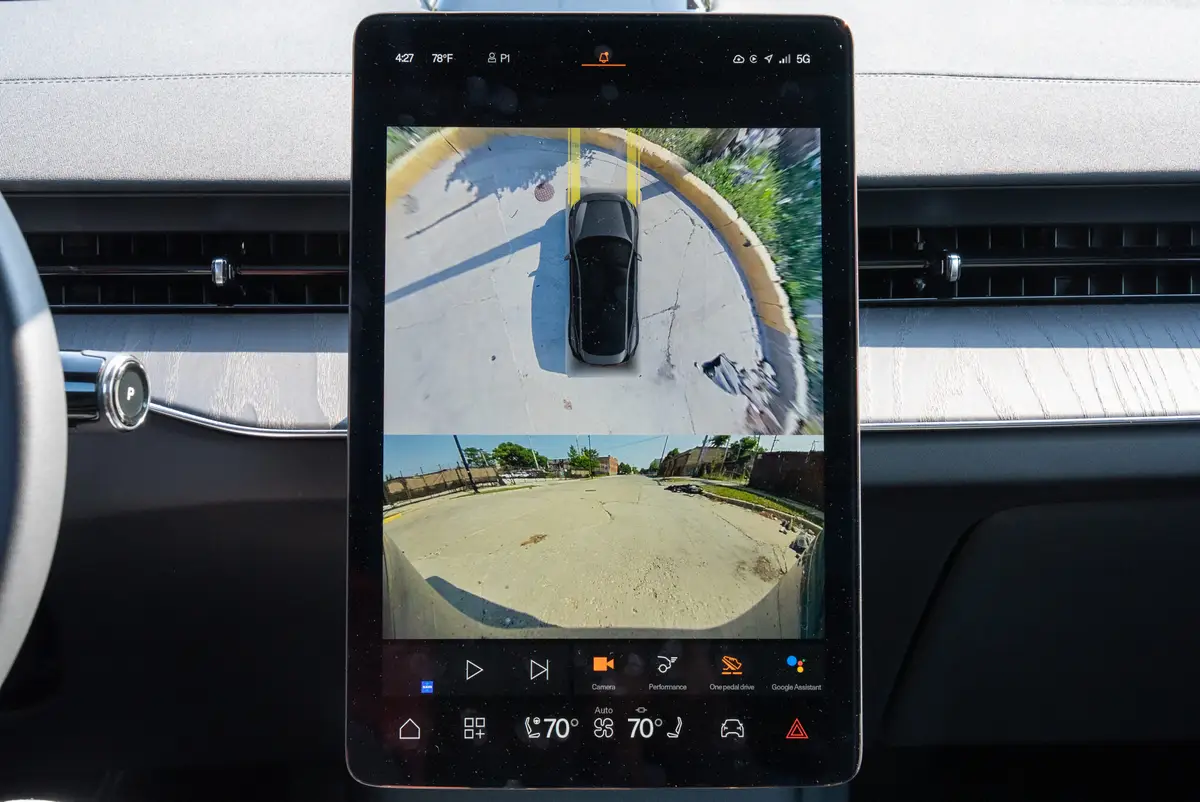
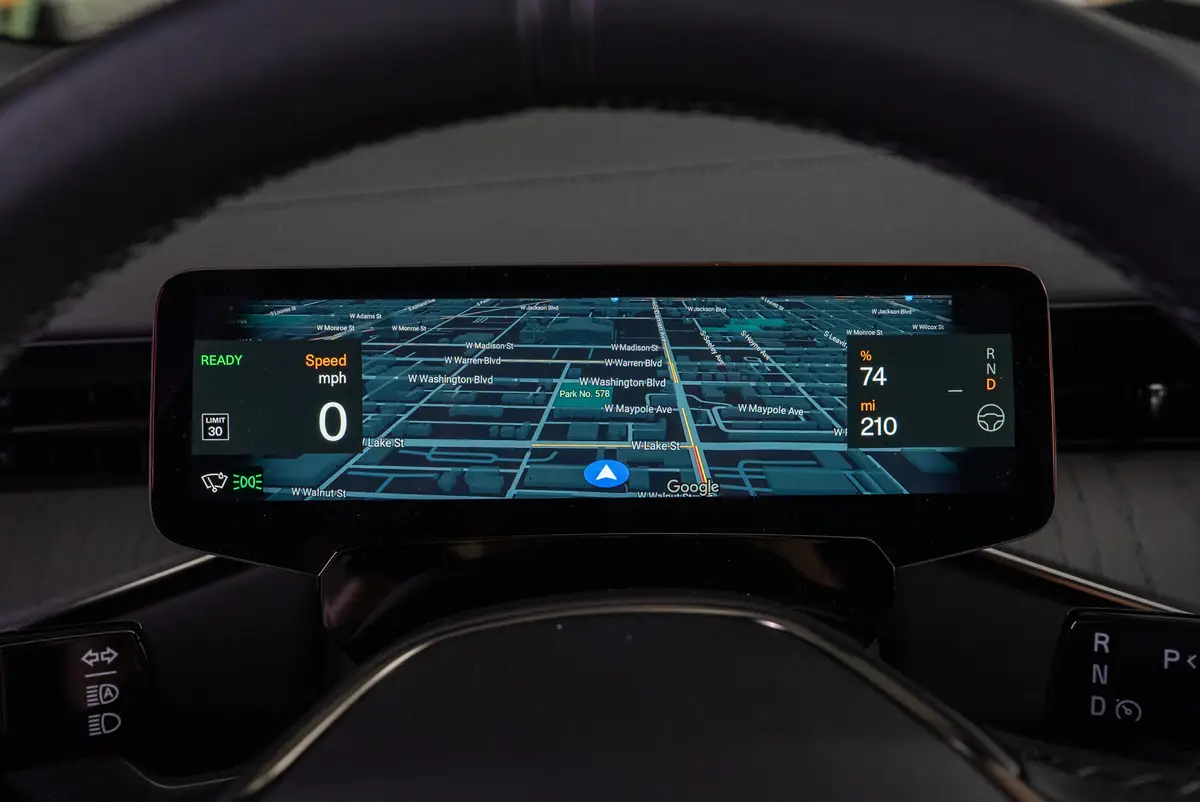
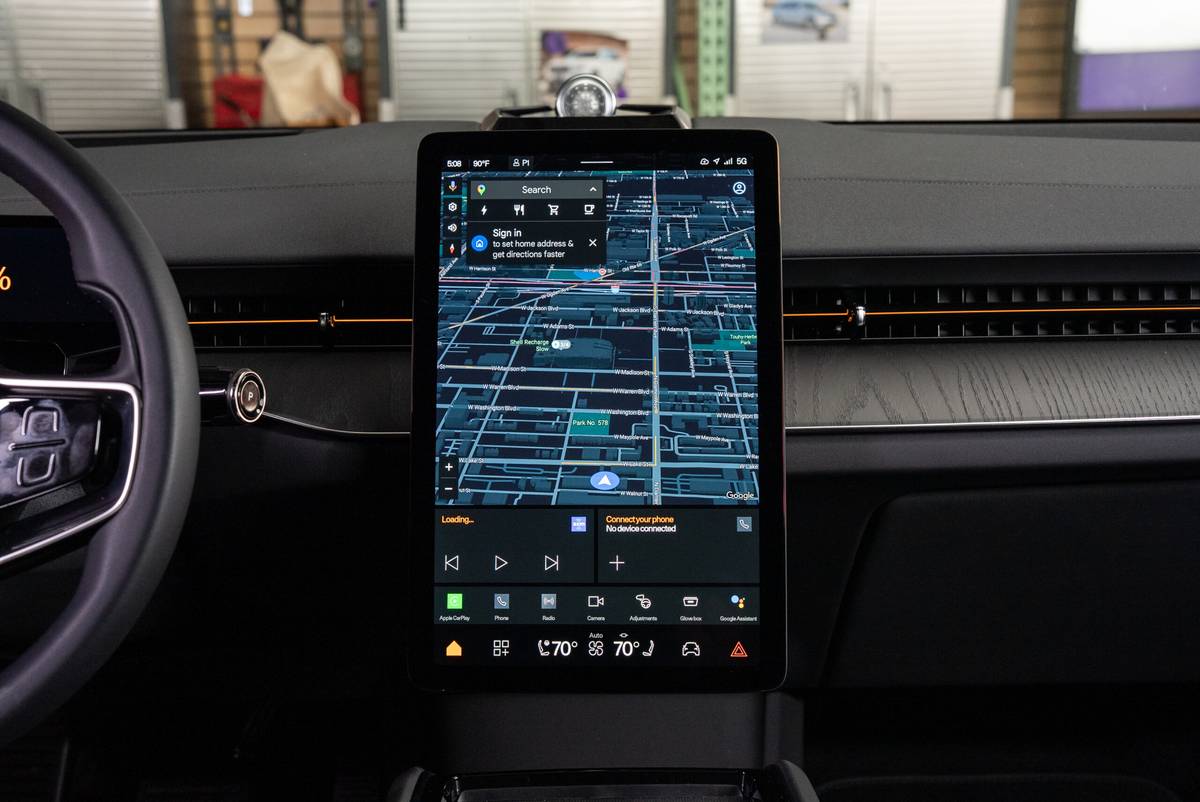
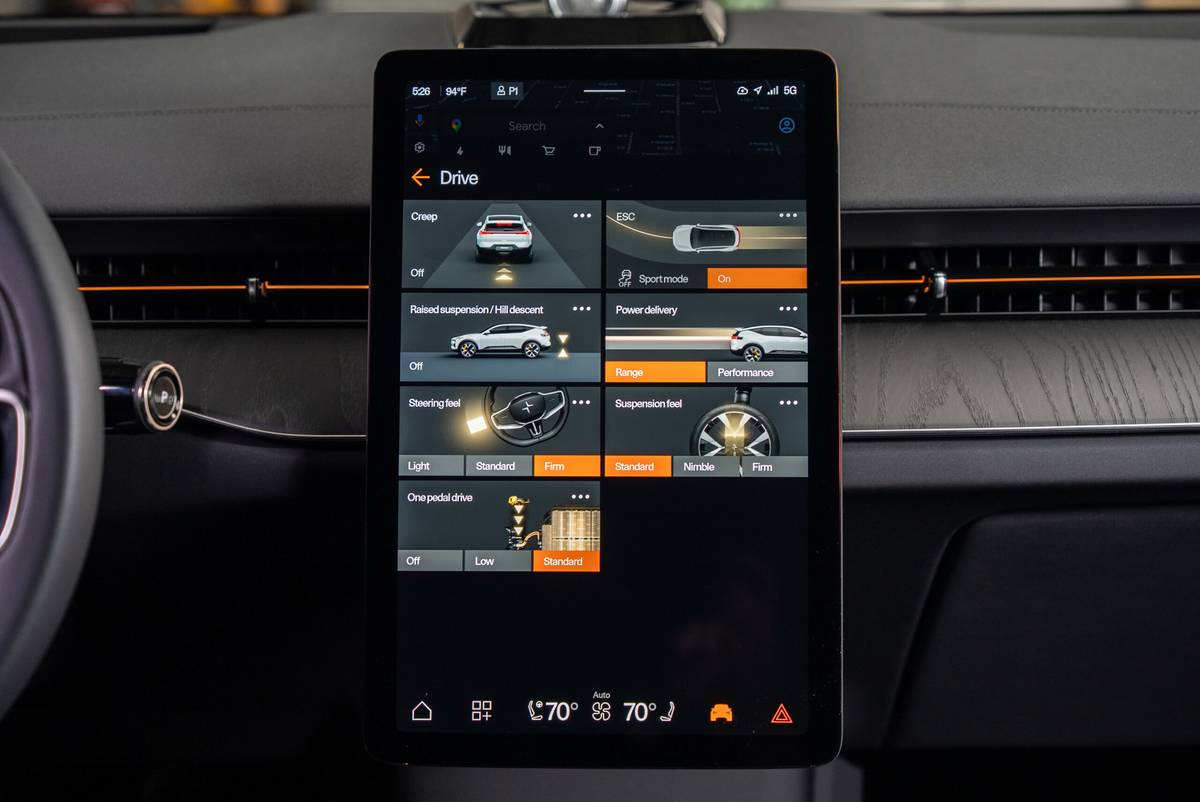
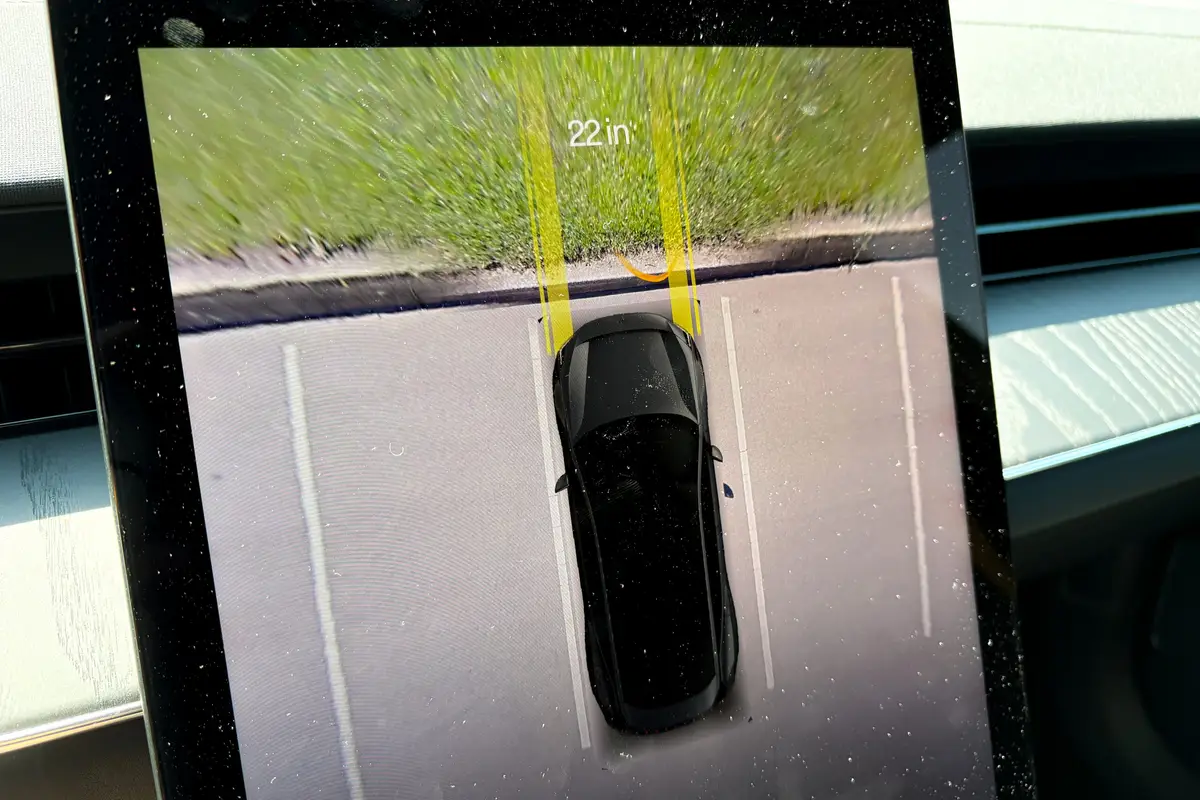


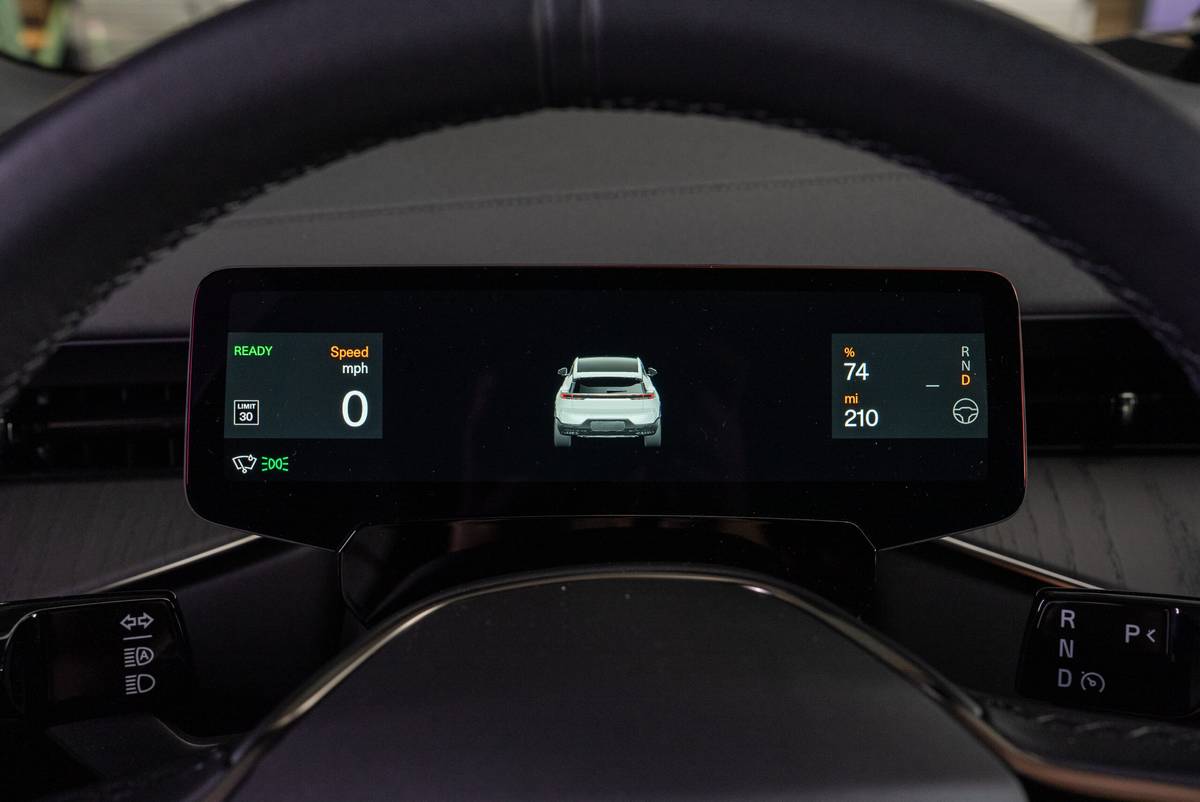








The 3 has a low roofline that comes into play in the cabin, limiting forward visibility. Over-shoulder views are decent, but rear visibility is also limited; I found myself reversing slowly as a result. The suite of exterior cameras that are part of the Pilot Package are useful and help compensate for the lack of visibility, but they’re not a complete replacement for it.
There’s decent backseat space considering the 3’s low roofline, but the seating position back there isn’t the most comfortable. The seat cushion is low, leaving your knees elevated and your thighs without much support. This positioning does, however, aid rear headroom, which is good even for taller passengers. The rear backrest doesn’t recline, but it folds flat with the cargo floor when you need more luggage space.
Backseat amenities include standard climate controls and two USB-C charging ports. Vehicles with the Plus Package have heated outboard rear seats joining the standard heated front seats.
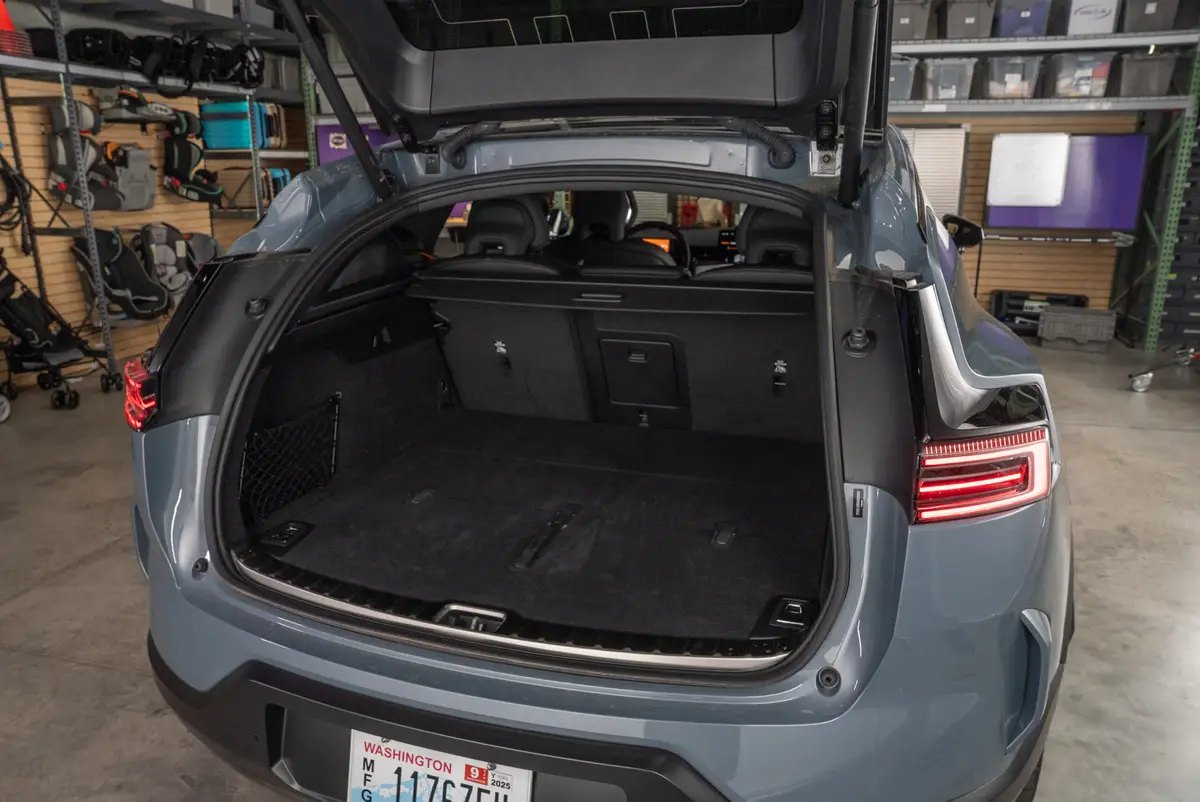
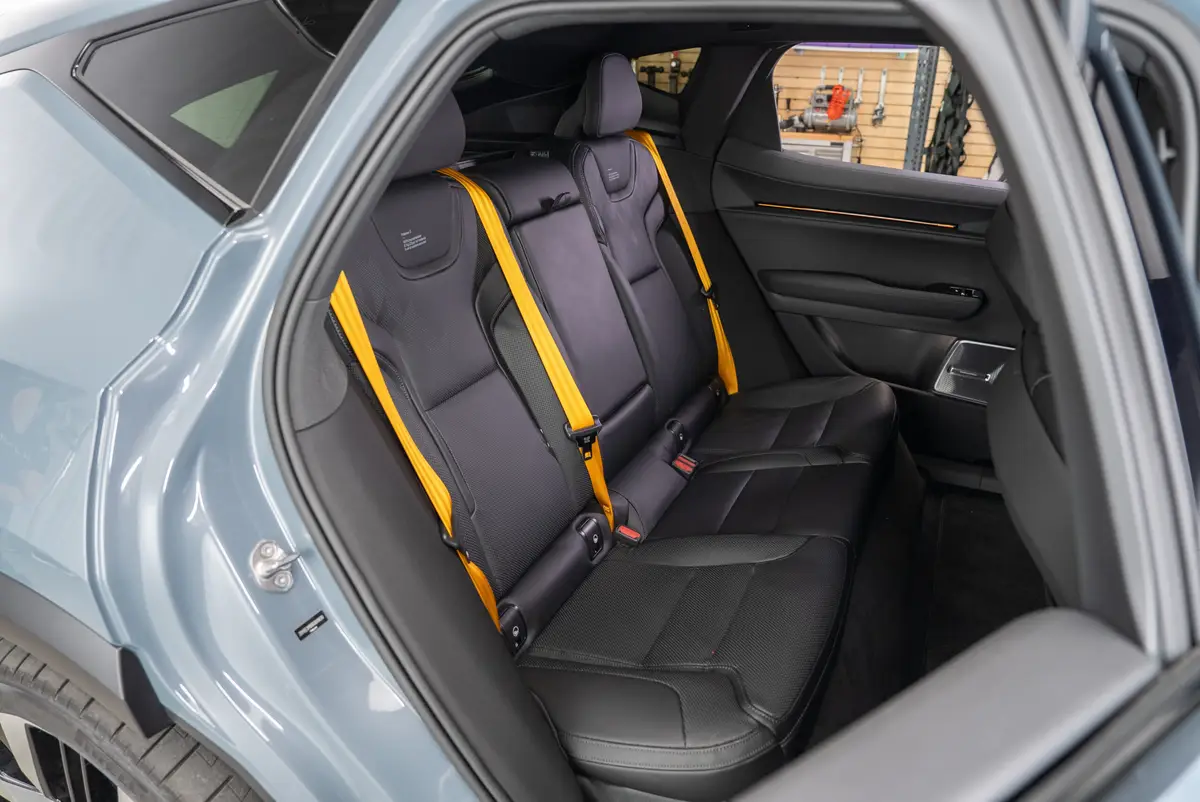

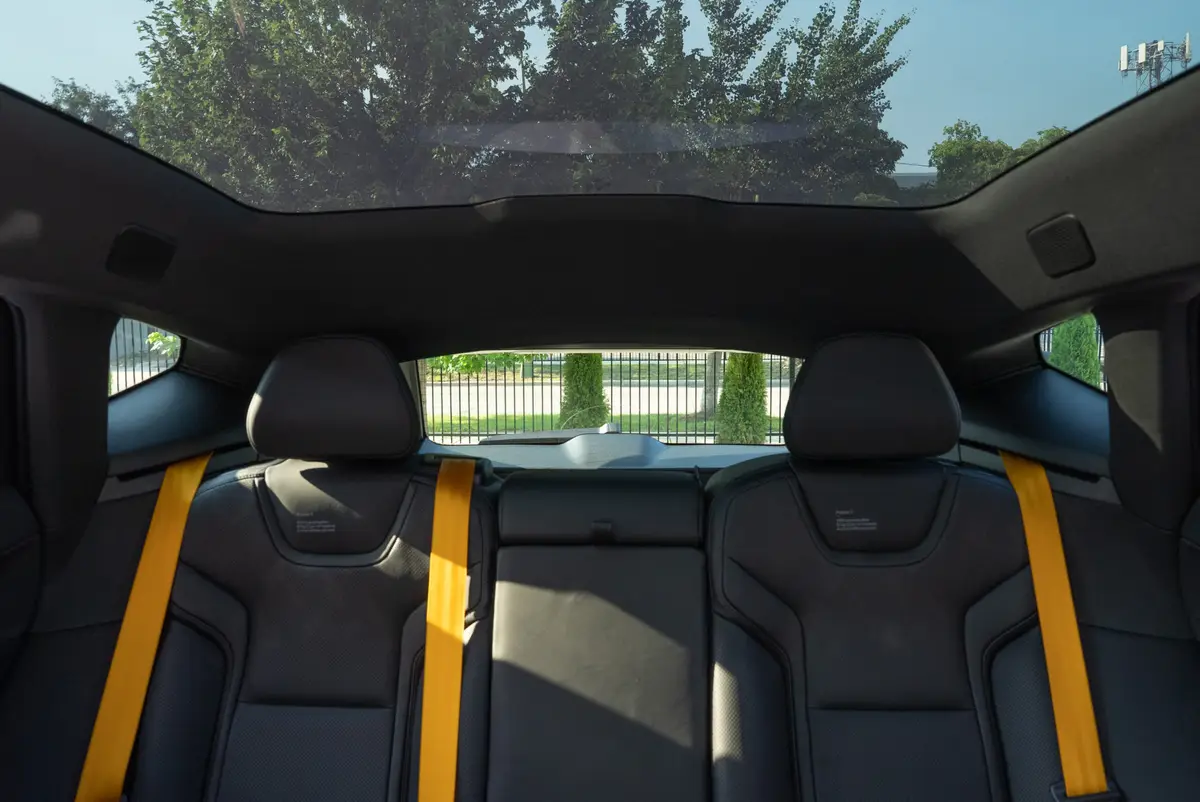
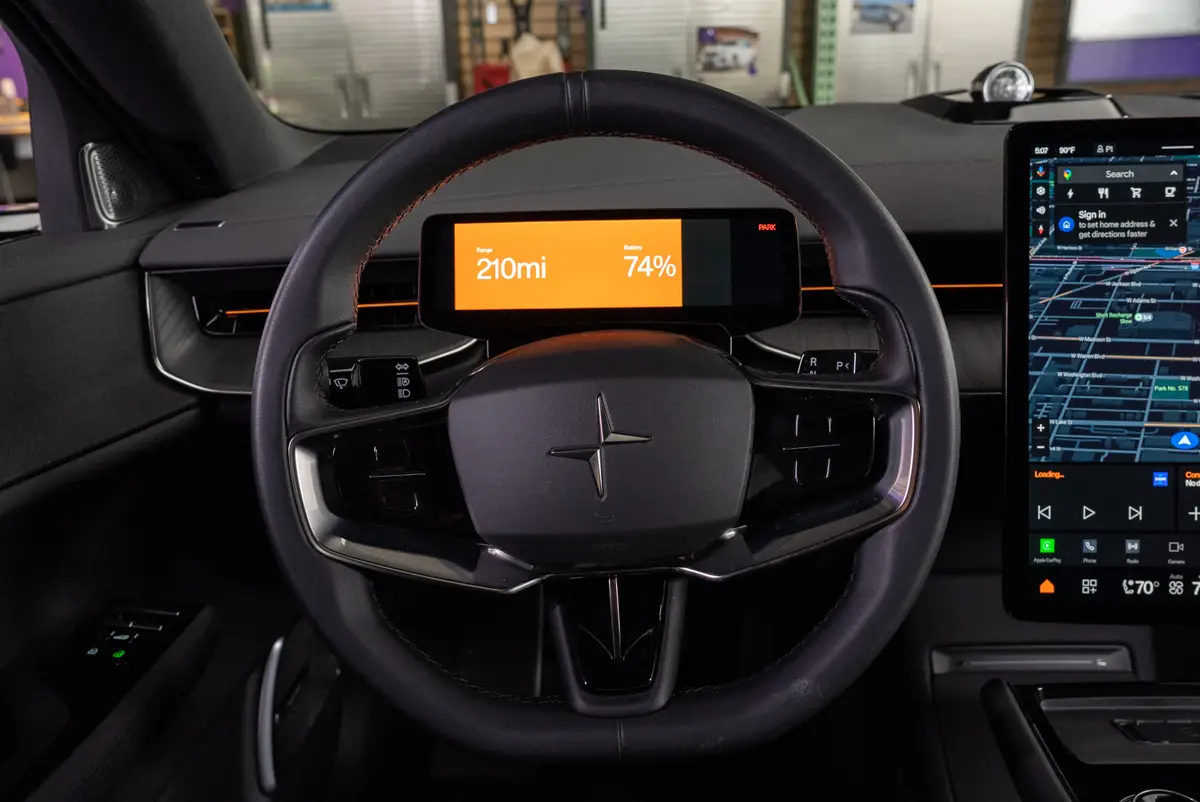
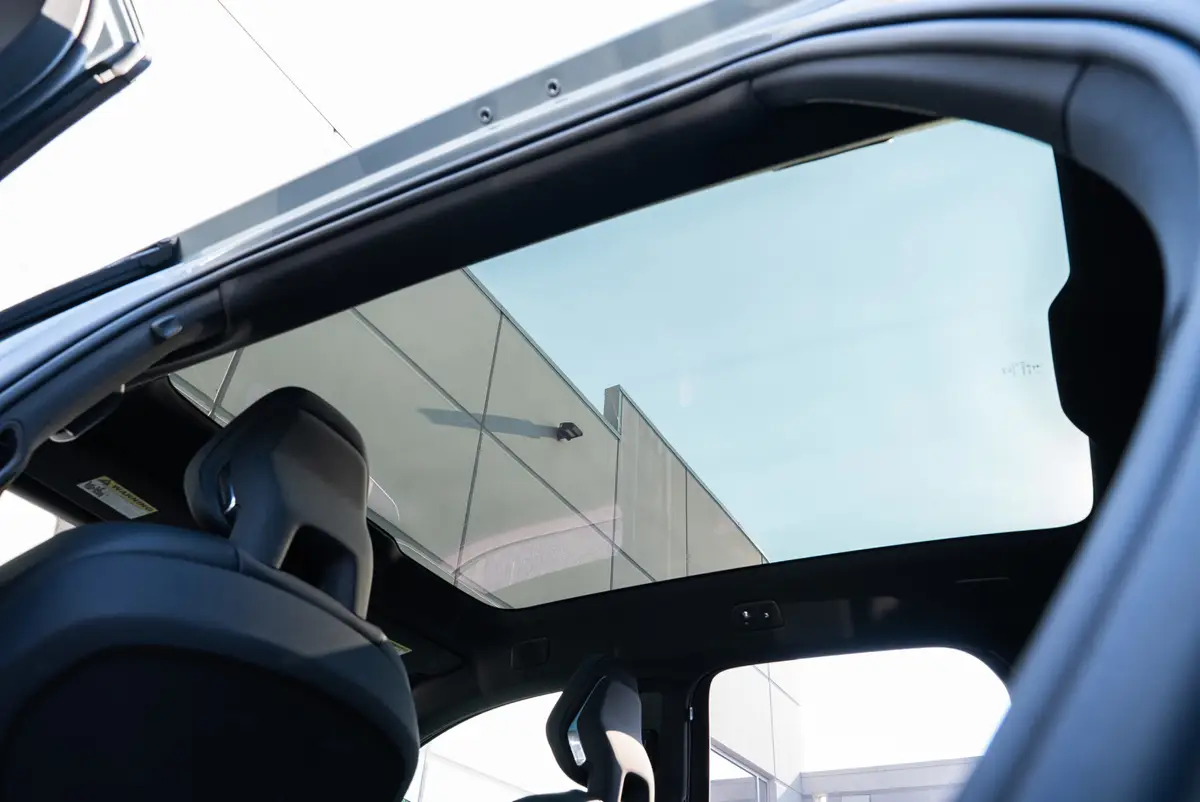
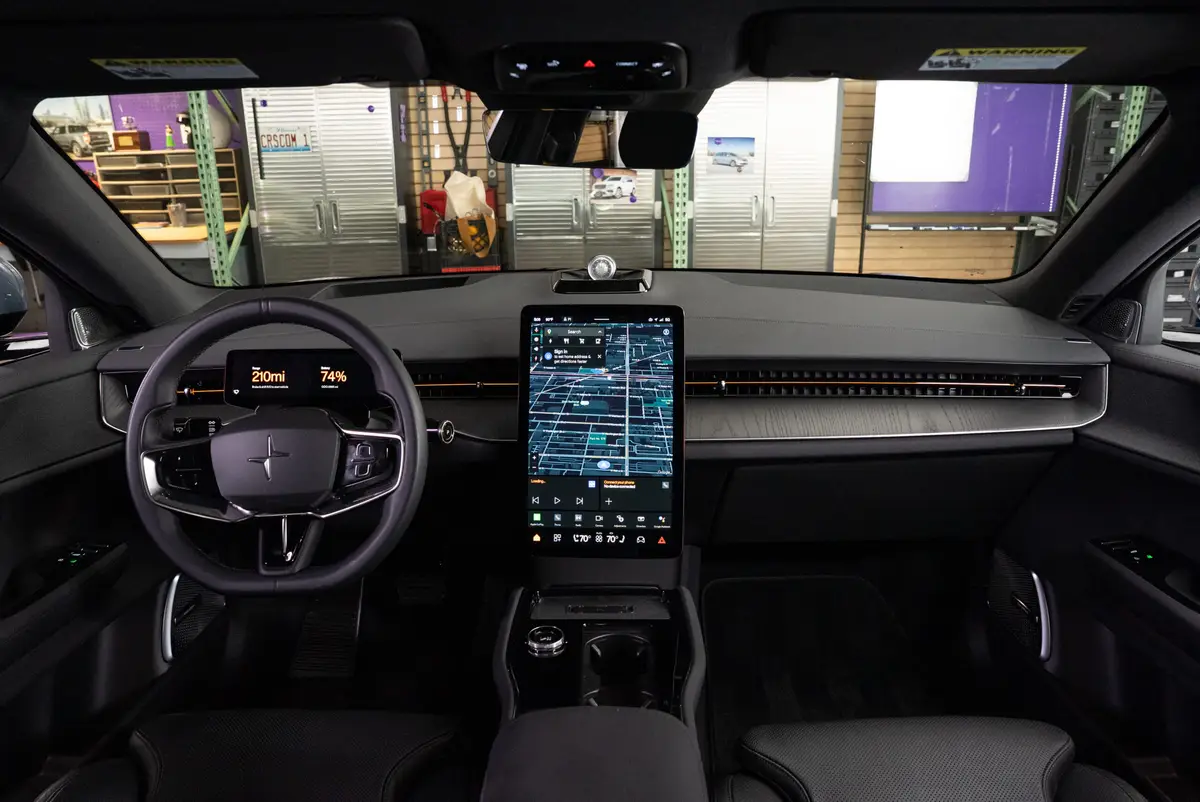
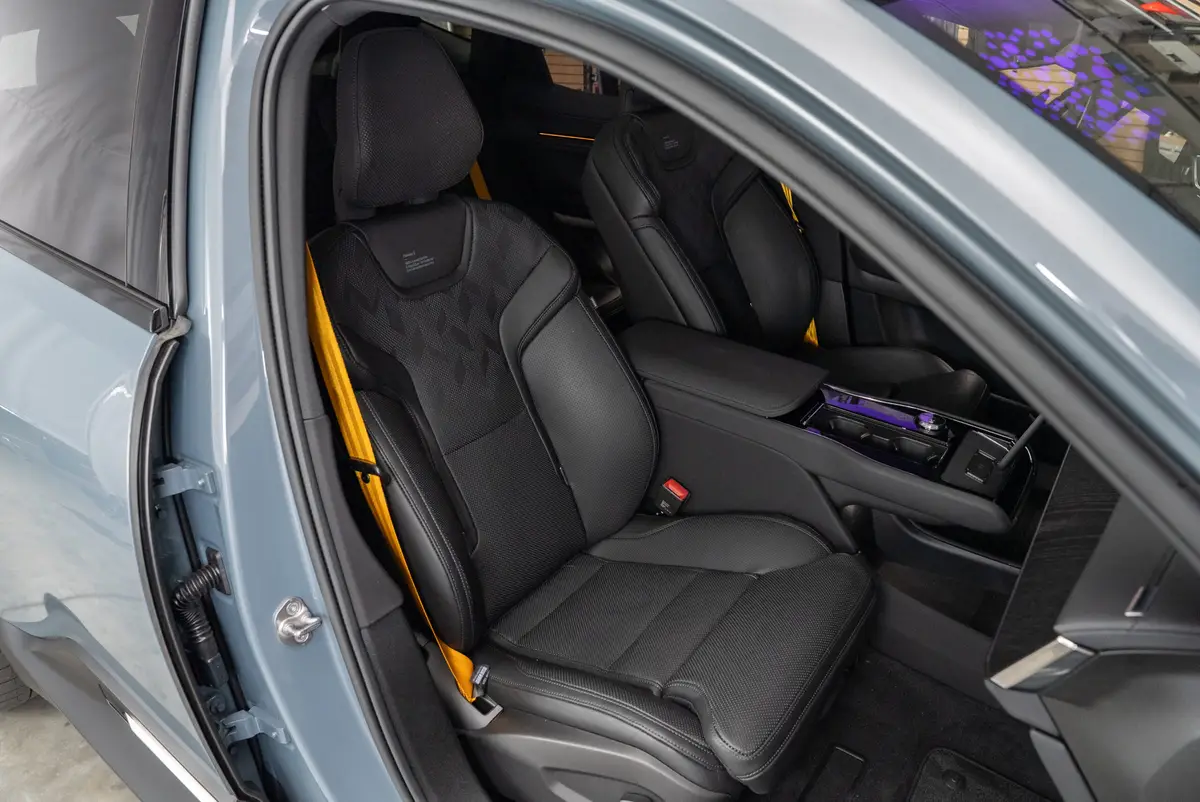








Appropriately Luxurious Driving Experience
Even with the specific chassis tuning that comes with the Performance Package, this SUV is still pleasant to drive in day-to-day use. It doesn’t feel as heavy or ponderous as some EVs despite a curb weight approaching three tons. Power delivery is very smooth, and there’s a lot of power in reserve, making merging onto the highway a low-stress, effortless task. And that’s in the SUV’s standard driving mode; in Performance mode, acceleration responsiveness increases.
Single-motor versions get a coil-spring suspension, but dual-motor models have an adaptive air suspension. Ride quality with the air suspension is firm but comfortable; it’s tolerable even on rougher pavement — even with our test car’s large 22-inch wheels and tires. Ride quality deteriorates some in the air suspension’s firm setting, but it doesn’t turn brittle.
The 3 responds readily to steering inputs, with quick, smooth responses, but it doesn’t offer feedback in its standard steering setting. You do get some steering feel in the firm setting, with a little feedback through the rim.
- ${price_badge()}
- ${ami_badge()}
- ${battery_badge()}${ev_report_link()}
- ${hot_car_badge()}
- ${award_badge()}
- ${cpo_badge()}
${price_badge_description}
${ami_badge_description}
The EV Battery Rating is based on this vehicle's current expected range relative to the vehicles expected range when new. ${battery_badge_text}
This vehicle is certified pre-owned, backed by a manufacturer warranty, and typically undergoes a rigorous multi-point inspection to ensure quality and reliability.
This vehicle is currently in high demand given its competitive price, desirable features, and overall condition, and may have a higher chance of selling quickly.
Shop the 2025 Polestar 3 near you
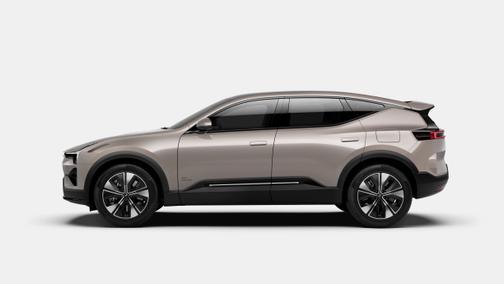
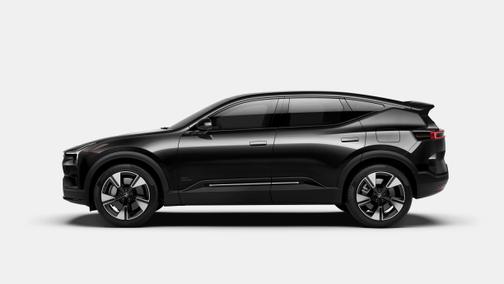
Should You Get a Polestar 3?
Our glitchy initial experience with the Polestar 3 didn’t leave a good first impression, but our second, trouble-free time with the SUV was encouraging. However, shoppers concerned with reliability should know that EVs haven’t done well on this front.
Even with Polestar’s aggressive incentives — as of publication, the brand was offering $10,000 toward the purchase of a new 3 — this SUV’s starting price of $58,900, including destination and that discount, is still considerably more than that of a Tesla Model Y, which starts at $46,380. Choosing a high trim level with options, like our test car, will up the cost to more than $80,000 — but that’s still less than the similarly powerful (and polarizing) BMW iX xDrive60, which starts at $89,675.
When it’s operating properly, the Polestar 3 more than holds its own against EV offerings from established brands, with a comfortable driving experience that’s fully luxurious. Of course, the first part of that prior sentence includes a big caveat, but if you’re especially concerned with long-term reliability, it’ll be a few years before the Polestar 3 has any sort of track record on that front. Until then, what you do have is the experience the vehicle offers, and what the 3 delivers makes it worth a look if you’re shopping this class.
More Electric Vehicle News From Cars.com:
- Electric Cars With the Longest Range
- Is the 2024 Polestar 2 a Good EV? 5 Pros, 3 Cons
- 2026 Polestar 4 Starts at $57,800 in All Its Rear-Windowless Wonder
- What to Know Before Purchasing an Electric Vehicle: A Buying Guide
Cars.com’s Editorial department is your source for automotive news and reviews. In line with Cars.com’s long-standing ethics policy, editors and reviewers don’t accept gifts or free trips from automakers. The Editorial department is independent of Cars.com’s advertising, sales and sponsored content departments.

Mike Hanley has more than 20 years of experience reporting on the auto industry. His primary focus is new vehicles, and he's currently a Senior Road Test Editor overseeing expert car reviews and comparison tests. He previously managed Editorial content in the Cars.com Research section.
Latest news
